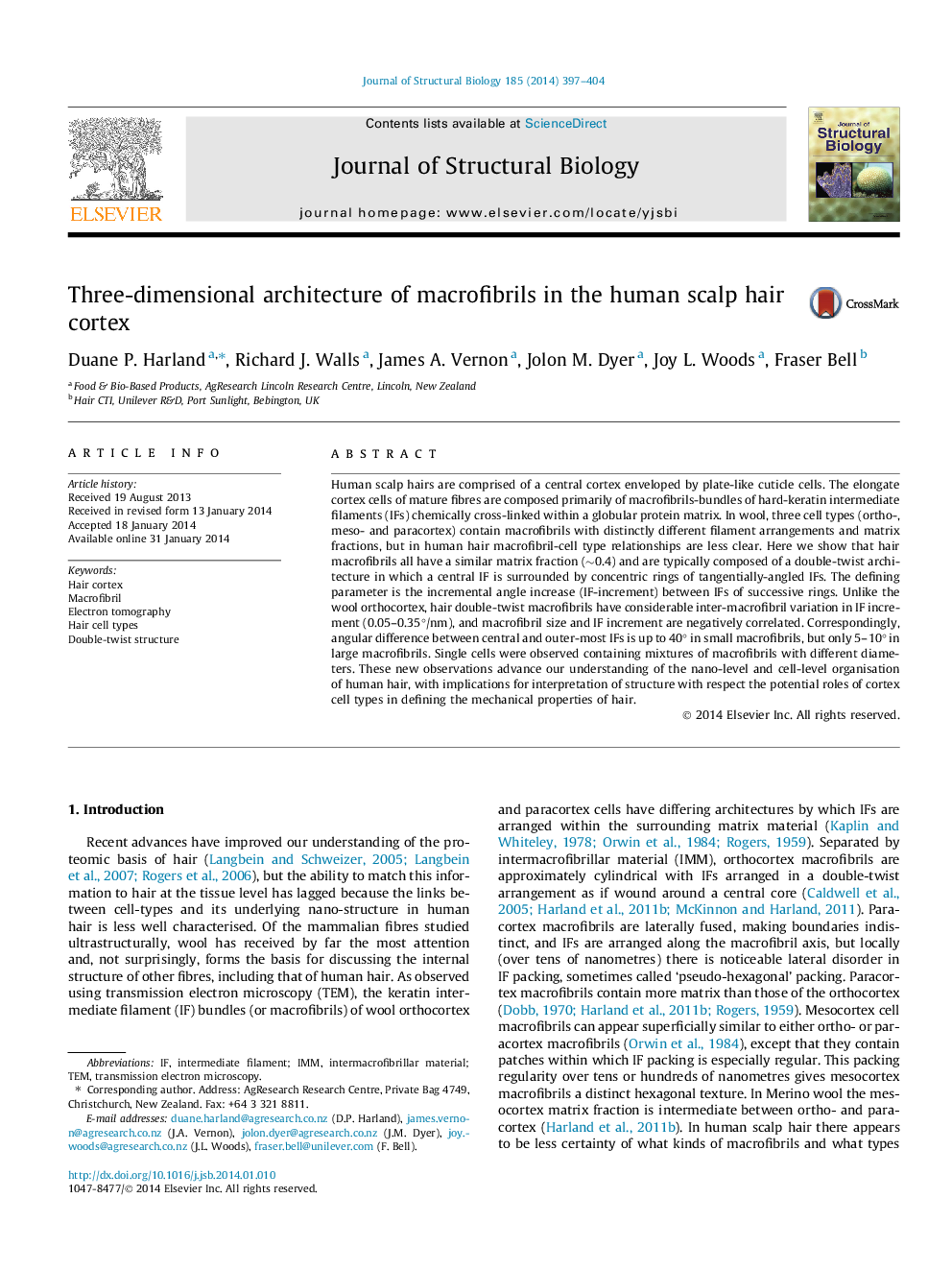| کد مقاله | کد نشریه | سال انتشار | مقاله انگلیسی | نسخه تمام متن |
|---|---|---|---|---|
| 5914035 | 1162716 | 2014 | 8 صفحه PDF | دانلود رایگان |
Human scalp hairs are comprised of a central cortex enveloped by plate-like cuticle cells. The elongate cortex cells of mature fibres are composed primarily of macrofibrils-bundles of hard-keratin intermediate filaments (IFs) chemically cross-linked within a globular protein matrix. In wool, three cell types (ortho-, meso- and paracortex) contain macrofibrils with distinctly different filament arrangements and matrix fractions, but in human hair macrofibril-cell type relationships are less clear. Here we show that hair macrofibrils all have a similar matrix fraction (â¼0.4) and are typically composed of a double-twist architecture in which a central IF is surrounded by concentric rings of tangentially-angled IFs. The defining parameter is the incremental angle increase (IF-increment) between IFs of successive rings. Unlike the wool orthocortex, hair double-twist macrofibrils have considerable inter-macrofibril variation in IF increment (0.05-0.35°/nm), and macrofibril size and IF increment are negatively correlated. Correspondingly, angular difference between central and outer-most IFs is up to 40° in small macrofibrils, but only 5-10° in large macrofibrils. Single cells were observed containing mixtures of macrofibrils with different diameters. These new observations advance our understanding of the nano-level and cell-level organisation of human hair, with implications for interpretation of structure with respect the potential roles of cortex cell types in defining the mechanical properties of hair.
Journal: Journal of Structural Biology - Volume 185, Issue 3, March 2014, Pages 397-404
